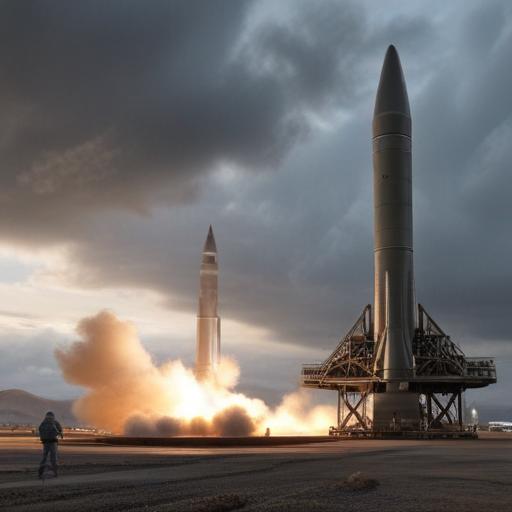North Korea launched approximately 10 rounds from multiple-launcher rocket systems on Thursday, as reported by Seoul’s military. The missile tests occurred around 10 a.m. from the Sunan area close to Pyongyang, coinciding with recent joint air drills conducted by South Korea, the United States, and Japan.
The Joint Chiefs of Staff (JCS) in South Korea mentioned that the specific details of the launched weapons are currently under thorough analysis by South Korean-U.S. intelligence agencies. They emphasized the importance of maintaining vigilance given the prevailing security dynamics in the region.
Reports indicate that the rockets may have been fired from 240mm multiple rocket launchers towards the Yellow Sea. This follows previous tests conducted by North Korean leader Kim Jong Un, who oversaw an upgraded 240mm system that boasted new guidance and maneuverability capabilities. Observers have speculated that these advancements could be intended for potential arms dealings with Russia.
Furthermore, North Korea has been sending troops and munitions to support Russia in its conflict with Ukraine. In return, North Korea is believed to be receiving crucial financial aid and advanced military technology to bolster its own military programs. Recently, Russia’s Security Council Secretary Sergei Shoigu announced that North Korea will dispatch 6,000 military workers and engineers to assist in rebuilding regions affected by war in Russia.
In a celebration of their strategic alliance, North Korea’s state newspaper, Rodong Sinmun, emphasized the strengthened bonds between North Korea and Russia on the anniversary of their comprehensive partnership agreement.
Notably, this series of events took place shortly after the trilateral military exercises involving South Korea, the United States, and Japan, which marked the first joint operation under the administration of new South Korean President Lee Jae-myung. President Lee and Japan’s Prime Minister Shigeru Ishiba reaffirmed their commitment to enhancing cooperation to counter North Korea’s nuclear aspirations, highlighting a united front in regional security efforts.
The backdrop of these military activities is significant as nations in the region navigate the compounded tensions arising from North Korea’s military developments and its growing ties with Russia. This situation remains fluid, with ongoing monitoring from military and intelligence agencies in the area.
